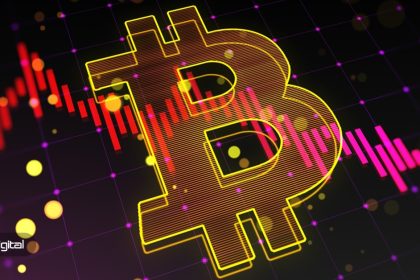The long time to verify transactions in the Bitcoin network and the high fees of the Ethereum network have always been mentioned as the weaknesses of blockchain technology; This means that users and investors have been waiting for a blockchain to solve these problems for a long time. maybe it can be said Solana It is the blockchain that everyone has been waiting for! Hundreds of projects are currently working on Solana, and its high scalability means that we should expect hundreds more.
In this article, we first examine that What is Solana? And then we'll describe its ecosystem and then take a look at its history and team. In the following sections, we will have a brief overview of the SOL token and how to buy it. Famous projects on Solana, tutorials on using wallets of this digital currency, and frequently asked questions are the sections you will read at the end of the article.
What is Solana?
Network Solana One First layer blockchain It is decentralized, secure, scalable and fast. This network was created with the aim of becoming a platform for decentralized applications (Dapp) and is currently one of the Ethereum's main competitors it counts. Solana like Ethereum from Smart contracts supports; But with the difference that More throughput has and Cost it fewer and in a word, More scalable Is. SOL token From the beginning, it has always been in the list of the top digital currencies in terms of market value.
On the front page of Solana's website (solana.com), the network is described as “powerful for developers, fast for everyone.” Solana transactions take less than 1 second; That means Solana is fast for all users. Very low transaction fees in this network and support for complex smart contracts also indicate that Solana is what developers want.
The relatively low speed of transaction verification in many blockchains, including Ethereum, has always been cited as one of the disadvantages of decentralized systems. Meanwhile, with the arrival of projects like Solana, slower blockchains gradually give way to more efficient blockchains.
On paper, this network is able to process more than 50,000 transactions per second; This means that Solana, in addition to other blockchains, also threatens payment giants such as PayPal and MasterCard. Because this ecosystem supports smart contracts, it can host a variety of decentralized applications, from NFTs to decentralized exchanges and automated market makers.
In a way, Solana can be described as similar to the Ethereum network, but with more efficiency. The acceptability of this network among the experts and developers of this field is to such an extent that hundreds of projects are currently working on this ecosystem and their number is increasing day by day.
More than a decade has passed since the launch of the Bitcoin network. At the time, Bitcoin solved a fundamental problem and pioneered a way where a centralized entity (such as Visa and PayPal) was no longer needed to verify and process transactions; That is, anyone from anywhere in the world could send money to other people without having to trust an intermediary.
The slow adoption of networks like Bitcoin has led to the emergence of new technologies. A few years later, Ethereum started its work with a capacity of about 15 transactions per second, but with the passage of time, this number was not enough.
Now, with the emergence of Solana and similar platforms, the processing capacity of blockchains has become much higher and people can carry out their financial transactions at a high speed while benefiting from the feature of decentralization.
SPL is the token creation standard on the Solana network. In other words, it can be considered similar to the ERC standard in the Ethereum network. SPLs are actually the standard for virtual tokens that are created on this network. To create tokens on this network, you can use Rust, C and C++ programming languages.
Solana works in multiple layers. Each layer is responsible for a part of the network operation. This means that this ecosystem can be considered a hybrid network.
How does Solana work?
Solana is a relatively complex network. The use of new technologies in it has made this blockchain one of the most optimal examples available. However, to work with this network and use the SOL token, you do not need to fully understand how this network works and its technical details.
The native token of this network is called Sol (SOL). According to Solana, 8% is added to the number of network tokens every year. On the other hand, during each year, from this 8%, 15% is deducted in the form of inflation reduction rate and this reduction continues for about 10 years. Finally, after about 10 years, Solana's annual inflation reaches 1.5%.

Read more: An overview of all consensus algorithms in digital currencies; From proof of work to blockchain killer!
Blocks are the skeleton of any blockchain. By placing transactions and their information in blocks, a chain called blockchain is formed. In fact, blocks are like pieces of a puzzle that eventually make a general picture called blockchain. To better understand the concept of blockchain, you can read the article “What is a block?” read the
In Solana, each block is called a slot and a special validator called a leader creates them. Each validator in this network is a member of the network cluster. In this network, each cluster has only one validator and its task is to add blocks or slots to the blockchain ledger.
This blockchain uses Proof of History to increase speed and efficiency. Proof of History allows users to create a series of records that can be used as confirmation to determine the exact date of events. Using such a mechanism makes the Solana network fast and light; Because there is no need to spend time for consensus on time labels.
Proof of History is actually a global reference on the Solana network for recording time. The main goal of this technology is to establish network security without sacrificing speed.
All transactions and network events are hashed with the SHA256 hash function. Using this function, the output is unique and almost impossible to guess. After hashing, each output is used as input to the next hash.
This process creates an unbroken chain of hashed transactions. In other words, a validator can add transactions and events to a block without needing the usual timestamps. On the other hand, the hashing process is timed, so validators can easily check how much time has passed.
In simple terms, each node in Solana has its own clock, and this means that like in the Bitcoin network, all nodes do not need to agree for a transaction. To better understand this complex process, consider this example:
Suppose we have three transactions “A”, “B” and “C”; The Solana network executes transactions using the Proof-of-History protocol. that's mean:
- Hash of the first transaction: an encrypted version of “A” with a zero timestamp
- Hash of the second transaction: an encrypted version of “b” with a timestamp of 1
- Third Transaction Hash: An encrypted version of “c” with timestamp 2
This creates a standard that is not relative and is clear and objective for all network subscribers. For this reason, Solana's blockchain is much faster than proof-of-stake or proof-of-work blockchains, and this network can process 50,000 transactions per second. To better understand this, compare it to the transaction confirmation capacity of Bitcoin, which is 5-7 transactions per second.
In Solana, the leader is responsible for building blocks, and leaders change at certain intervals. This change is so that the nodes know who is the next leader.
Unlike Bitcoin where timestamps are dependent on the miner's local time, there is no such dependency in Solana; Because the proof of history solves this need and the concept of time is determined by the network in the form of a global principle.
Despite all the benefits of proof-of-history, this technology has its drawbacks. For example, becoming a validator in Solana requires relatively powerful hardware, and if you don't have these requirements, you cannot be a validator for this network. On the other hand, proving history makes Solana more focused; Because like normal proof-of-stake networks, not everyone can act as a validator.
Another problem that arises in the meantime is the high volume of transactions. As we said, the speed of transactions in this network is high. Assuming that each transaction is 250 kilobytes and 50,000 transactions are confirmed per second, 40 petabytes of data will be stored on the blockchain every year. A volume that may not be able to be stored by anyone.
To solve this problem, Solana has provided the solution of archivers, which we have described below how it works.
until theRihcheh and Tim Solana

Anatoly Yakovenko started working on this project in 2017. A little later, Iaconco founded the company we know today as Solana Labs in collaboration with Greg Fitzgerald and Stephen Akridge, with whom he previously worked at Qualcomm.
Iakonko started the Loom project in collaboration with Akridge, Fitzgerald and a team of former Apple and Qualcomm specialists. A little later, because they didn't want the name of their project to be similar to Loom Network, which is another second layer project on Ethereum, they changed it and chose the name Solana for it.
Yaquonco currently serves as co-founder and CEO of Solana Labs, and Eric Williams, another co-founder of the project, is chief scientific officer of Solana Labs. Greg Fitzgerald and Raj Gokal, the other co-founders of the project, serve as Chief Technology Officer and Chief Operating Officer, respectively.
Solana's team raised around $20 million through its limited token sale during its quarterly funding round.
The network launched the beta version of its mainnet in March 2020 and shortly after managed to attract another $1.76 million during its public auction on the CoinList platform.
At that time, the Solana beta network only provided users with the ability to perform transactions and some basic tools, and there was no news of staking rewards; Because the timing of the release of SOL tokens had not yet been determined.
Currently, Solana Labs plays the most prominent role in the development of this network. Solana Foundation is also an institution that provides the necessary funds for the development of this network.
Important features of Solana

Generally Solana has eight important and basic features that includes:
- Proof of History
- Byzantium Failure Tolerance Tower
- Turbine
- Gulf Stream
- Sealevel
- Pipelining
- Cloudbreak
- Archivers
Proof of history
In almost all distributed networks, the biggest challenge is that nodes cannot trust the timestamps they receive from other nodes; Because these tags are sometimes added to the blocks by the nodes themselves or added to the blocks from their hardware clock.

Solana has tried to solve this problem by presenting a proof-of-history model. Proof of history is actually a secure, encrypted resource that creates a network-wide reference for time. History proof is actually a verifiable delay function (Verifiable Delay Function) with high frequency. In this type of functions, certain steps are required to verify the validity of the output; But anyone can easily verify the validity of the output.
Proof of history allows nodes to build the next block without coordinating with other network members. In this process, there is another news about trusting time labels. As a result of using proof of history, the speed of verifying transactions increases significantly.
Turbine

Turbine in Solana is the protocol that acts as a bridge between validators. Turbine is actually a Solana consensus independent connection protocol. This protocol is very similar to BitTorrent and can be considered a more optimized version of BitTorrent.
When a block is transmitted in the network, the turbine divides it into small packets; In other words, this network has solved the bandwidth challenge by dividing data into small packets.
Byzantium Tower fault tolerance

Solana uses Byzantine Tower fault tolerance as a type of consensus mechanism, which is a type of Practical Byzantine Fault Tolerance. This mechanism works by using proof-of-history, which is itself the network's global clock. By taking advantage of this fault tolerance, consensus is achieved without the need to exchange a high volume of processing, and transaction verification is done much faster.
Before Solana's ledger reaches its final state, validators vote on which ledger is valid. After voting, it is not possible to do it again.
Gulfstream

Solana has reached the capacity of 50,000 transactions per second due to facilitating the processes required to verify blocks. In this blockchain, the nodes have a leader called the leader, and all validators know the order of the leaders; That is, they know who the current leader and the next leaders are. In this way, validators send transactions to the leader ahead of time, and in this way, the leader can execute transactions sooner, which reduces the time of transaction verification.
Gulfstream in Solana plays a role similar to Mempool or unconfirmed transaction pool. This technology is actually the new generation of mempools in blockchain.
C-level
Solana gives users the ability to execute more than one smart contract at the same time. A clevel can be described as a type of virtual machine that schedules transactions but does not execute them in the virtual machine.
Note that all blockchains are single-threaded computers, but Solana is the only chain that supports parallel execution of transactions on a shard.
Pipe lining

Transaction processing in Solana relies heavily on pipelining. Pipelining is actually a set of related elements where the output of one data is the input of the next data. In Solana, a series of blocks containing transaction information are quickly validated and transmitted to nodes. In fact, Solana's pipelining can be considered a transaction processing unit that optimizes validation. This optimization is done by allocating data to different hardware.
Cloudbreak

Cloud Break is a feature that allows Solana to be scalable. CloudBrick creates a data structure where transactions are processed using all the hardware responsible for indexing the data.
By using Cloudbrick, the time to build blocks in Solana is minimized and on the other hand, transactions are confirmed as quickly as possible.
Archivers
The Solana network allows each node to receive and store data on other nodes depending on their hardware storage. Archivers receive specific data from validators depending on their capacity. This data is stored in a way that it can be accessed on the network.
Learning how to buy Solana
Buying Solana, like buying any other digital currency, is not that difficult. Just find a cryptocurrency exchange that has Solana in its list of tradable currencies. In general, there are two ways to buy Solana:
- Direct purchase of Solana from Iranian exchanges with a bank card
- Buying Solana from foreign exchanges
In the past, the second method was very popular among Iranian users. This issue had two reasons. The first reason is that the number and variety of Iranian exchange services was small. And the second reason is that authentication was not required in many prominent foreign exchanges, including Binance.
With the mandatory authentication in Binance, it became more difficult for Iranians than before. Of course, during this period, the number of domestic exchanges was continuously increasing, and the variety and quality of their services are better than before. Therefore, as it seems, the most logical method for Iranian users is to use domestic exchanges.
Just search the phrase “buy Solana” in Google and you will come across dozens of different exchanges with different names where you can buy SOL tokens. Of course, we also suggest you to use the new digital currency feature.
By referring to Solana's purchase page, you can be directly directed to the payment gateway by specifying the amount and then entering some identity information such as national number and phone number and complete your purchase.

Solana Wallets (SOL)
To store any currency, you need a wallet. Given Solana's high popularity, you probably won't have much trouble finding a wallet. In the following, we will introduce some famous wallets for SOL token.
Phantom Walt It is one of the main wallets of Solana. Working with Phantom Wallet is not so difficult and users can solve all their needs in interacting with the Solana network using this wallet.
In Phantom Wallet, in addition to storing SOL tokens, you can also store other tokens based on the Solana ecosystem. This wallet also supports the storage of SPL tokens.
The possibility to participate in Solana shares, compatibility with the Ledger Nano X money floor and the use of decentralized Solana applications are among other features of the Phantom wallet. Phantom Wallet also provides you with your private key, which means it is reasonably secure.
Sol Flare It is another web based wallet for Solana. This wallet is easy to use and like Phantom Wallet, it is compatible with hardware wallets and users can store their own tokens in it.
Math Wallet Among the good wallets for Solana. This wallet also supports other digital currencies such as Binance Coin, Bitcoin and Ethereum. It is also possible to easily connect this wallet to hardware wallets.
| name | type | Download/access link |
|---|---|---|
| Phantom Walt | Chrome extension | access |
| Like Walt | Software/mobile – under the web/Chrome extension | access |
| Soulflare | Under the web/Chrome plugin | access |
| Solt | under the web | access |
| Atomic wallet | Software/mobile – computer | Download |
| ledger | hardware | physical |
Be sure to observe the safety aspects when using digital currency wallets. Make a backup copy of your wallet. Most digital wallets provide you with 12 recovery words (English); Write these words down in a safe place. If these words are lost or the backup is deleted, the assets will not be accessible at all.
Solana stocking
Like all proof-of-stake networks, in the Solana network, you can stake the SOL token and profit from its rewards. All SOL token holders can stake it in one of the staking pools and receive its profits instead of keeping it in a wallet.
To stake SOL, you need to choose one of the wallets that support this feature. Note that not all wallets have this feature. To find a list of SOL wallets that support staking, you can use the link docs.solana.com/staking.
Whichever wallet you choose, you must first create a staking account in it and transfer your SOL tokens to it. Each staking account has a different address and one wallet can manage multiple staking accounts at the same time.
In order for your investment to be profitable, you must hand over your tokens to an agent or validator. Tokens in a staking account can only be assigned to one agent; Therefore, if you intend to choose different validators, you must create different accounts.
For information about Solana's different validators, we recommend using links such as solanabeach.io and validators.app. Of course, some validators prefer to introduce their services on official Solana forums such as forum.solana.com.
The most famous projects of the Solana ecosystem

As we mentioned, hundreds of projects are currently operating on the Solana chain. In the meantime, we have selected 5 of the most famous Solana ecosystem projects, which we will introduce and review below:
- Serum
- radium
- Solarium
- Mango Markets
- Audius
Serum can be considered the biggest project on the Solana ecosystem. Cerum is a decentralized exchange where traders can buy and sell their currencies. All interactions in Serum are done on the basis of smart contracts.
For a better comparison, Serum can be considered similar to UniSwap on the Ethereum network and SushiSwap on Binance Smart China. Serum also supports inter-chain transactions; This means that traders can trade Ethereum tokens and tokens created on the Polkadat blockchain.
radium is an automated market maker (AMM) and liquidity provider that runs on the Solana blockchain. In addition to offering the ability to trade currencies, cultivate profits and create liquidity pools for SPL tokens, Ridium also provides users with facilities to launch projects on this network. These features are similar to the launchpad of the Binance exchange. According to Rhidium, more than 2 billion dollars of capital is locked in this protocol.
Read more: What is an Automated Market Maker (AMM)? Getting to know the beating heart of decentralized exchanges
Solarium is an encrypted messenger that runs on the Solana blockchain. Using the ChaCha20-Poly1305 systematic encryption algorithm has increased the security of this messenger to a great extent.
Mango Markets It allows users to use levers up to 5 times. Almost zero fees and high speed are among the features of this trading platform. Mango Markets uses Solana and Serum liquidity pools; Using these pools minimizes liquidity concerns.
Audius As the name suggests, it is a decentralized platform for streaming music. Odios aims to give initiative to content producers and artists. Odios was first developed on the Ethereum blockchain, but soon migrated to Solana. Currently, Odios has more than 1 million users.
Frequently asked questions
No; Solana is a proof-of-stake platform and is not minable.
no You can buy a fraction of a Solana unit called a Lamport. Each Lamport is equivalent to 0.000000001 Solana.
Yes, this digital currency works on its own network called Solana Blockchain.
Transaction fees in Solana are very low. At the time of writing, each transaction costs about $0.00025.
Conclusion
Solana is one of the most optimized and at the same time one of the most complex blockchain networks available. Using modern technologies such as proof of history, Gulfstream and Turbine, this ecosystem has reached a very high efficiency and can process 50,000 transactions per second. It should not be forgotten that these complications will not be an obstacle for normal users to use the network.
The SOL token, as the native token of the Solana network, has various uses in the network, and users can earn profits by staking them. Among other uses of this token, we can mention the payment of fees in the Solana network.
Due to the popularity of Solana among users, most popular wallets support this digital currency, and since it has a high market value, you will rarely find an exchange that does not have Solana in its list of currencies.
Solana has a lot of potential and already has a lot to say as one of the main competitors of Ethereum. The high acceptability and acceptance on the one hand and the many applications of the Solana ecosystem on the other hand promise brighter days for Solana.
RCO NEWS


















